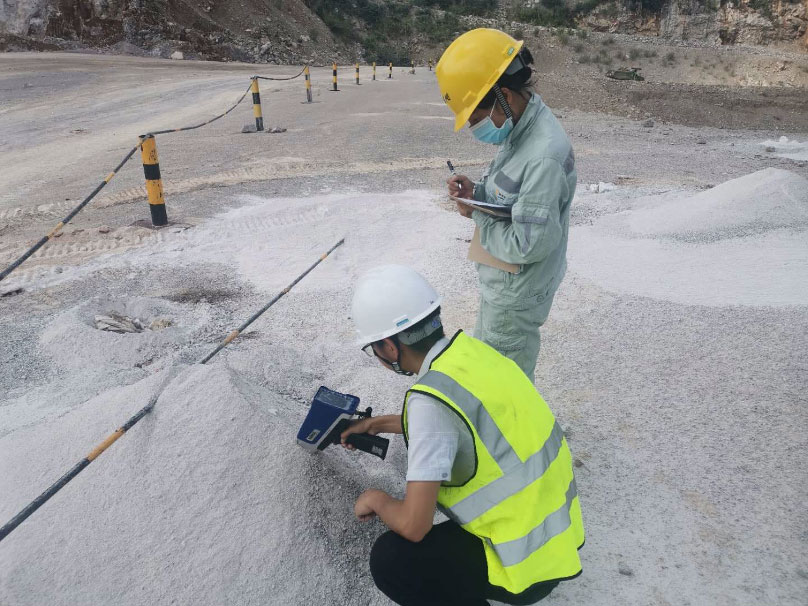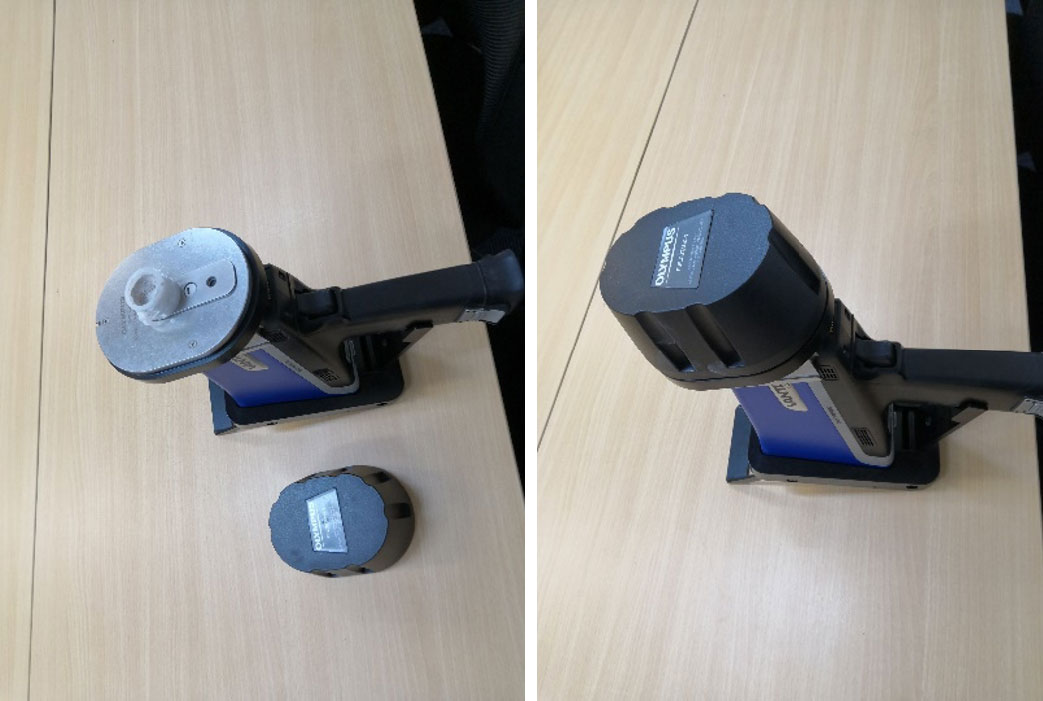Limestone is the main raw material used to prepare lime and cement and is also used as a melting agent in iron and steelmaking. This resource is abundant and widely distributed in many parts of the world.
Portable X-ray fluorescence (pXRF) and X-ray diffraction (pXRD) analyzers can provide geologists, metallurgists, and scientists with elemental and mineralogical information for limestone samples in the field. This quantitative data is delivered in real time and can be used to make fast, informed decisions. For instance, metallurgists can develop efficient purification and refining processes with the analysis data to improve the ore recovery rate.
Read on to learn how these portable analytical methods work and discover their key advantages for limestone analysis.
Limestone Analysis Using Portable XRD Instruments
Portable and compact XRD instruments like the TERRA™ II or BTX™ III analyzers can identify and quantitatively analyze the compound composition and content of limestone samples. A quantitative analysis of minerals can help geologists reversely calculate the concentration of calcium oxide using chemical molecular formulas to determine:
- Whether to abandon boreholes or keep drilling to a deeper layer
- Where to drill
- Whether to continue exploring and prospecting in a specific area
The figure below shows a quantitative analysis of limestone samples from China's Xinjiang and Guangxi provinces. Operators used the BTX III XRD analyzer to obtain diffraction patterns of the samples, then performed qualitative and quantitative analyses of the diffraction patterns in XPowder software.
| Sample No. | Calcite | Quartz | Others |
|---|---|---|---|
| 1 | 84.2 | 8.4 | 7.4 |
| 2 | 92.1 | 2.5 | 5.4 |
| 3 | 91.2 | 3.5 | 5.3 |

A spectrum produced by the BTX III XRD analyzer for a limestone sample
The data shows the notable differences in calcite concentration between different sections of the limestone sample.
Geologists generally select sites where limestone samples have high calcite and low silica or dolomite content for conducting further surveys and studies. The kind of limestone with calcite as its main composition is called carbonate.
Benefits of Using Portable XRD Instruments for Limestone Analysis
Along with real-time quantitative data and a portable design, Olympus pXRD analyzers offer other helpful advantages like:
- Small sample size required (only 15 mg)
- Easy sample preparation
- Unique vibrating chamber design for precise, accurate X-ray diffraction
- XRD and XRF testing can be conducted simultaneously, enabling faster decisions on-site
Limestone Analysis Using Portable XRF
Operators can use portable XRF to generate complementary material analysis data about limestone in the field. For instance, pXRF instruments like the Vanta™ analyzer can display results for elements or compounds—users can switch between these results as needed. Measurements can be made at the quarry rock face, enabling operators to define the ideal area for blasting through to the blended materials before processing.
Here’s a real example using portable XRF analysis. The images below show a technician analyzing an ore sample collected from a limestone mine in the Guangxi province, China with a Vanta XRF analyzer.

A technician tests a limestone sample with a Vanta XRF analyzer
Because freshly mined ore samples vary greatly in granularity, analyzing unprepared ore samples could yield results with significant differences in calcite content. As a result, a good best practice is to grind raw ore samples into powder on-site, put it in a special sample cup, then test it.

Testing prepared samples of limestone ore with a Vanta XRF analyzer
After analyzing some prepared samples, the technician obtained the following results:
| Calcium oxide (lab) | Vanta VCR model (180 s) no calibration | Absolute error | Relative error |
|---|---|---|---|
| 52.67 | 52.32 | -0.35 | -0.66 |
| 51.65 | 50.75 | -0.90 | -1.74 |
| 50.98 | 49.3 | -1.68 | -3.30 |
| 52.5 | 51.17 | -1.33 | -2.53 |
The data shows that there is good agreement between the lab results and those obtained using a Vanta analyzer.
Benefits of Portable XRF Analyzers for Limestone Analysis
With the Vanta XRF analyzer, we can quickly identify an unknown sample's main chemical composition and the concentration of its composing elements in percentages. In fact, it only takes about 20 minutes to complete an analysis, from on-site sampling to obtaining results:
- 5 minutes for sampling
- 5 minutes for sample prep
- 8 minutes for testing
- 3 minutes for data analysis
In contrast, using lab-based XRF analysis to test the same sample type would take nearly one month: about 1 week for delivering the sample, 1–2 weeks of waiting time, and 1 week for getting the analysis report.
Rapid on-site testing with pXRD and pXRF enables fast decisions on-site, saving both time and costs compared to conventional XRD and lab-based XRF analysis.
Related Content
Plan a Successful Portable XRF Program for Geochemistry: 9 Free Video Tutorials to Get Started
.jpg?rev=467C)
